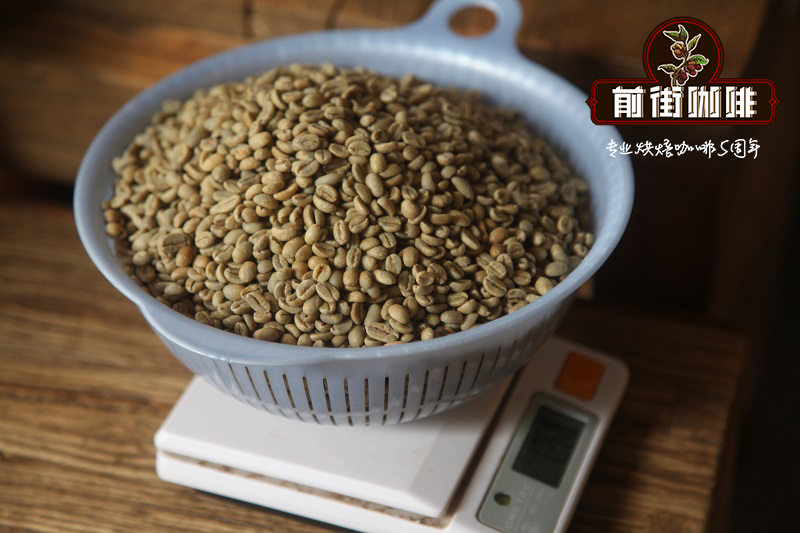Arabica Coffee beans Ethiopian Coffee represents Solar Sidama

Professional coffee knowledge exchange more coffee bean information please follow the coffee workshop (Wechat official account cafe_style)
The delicate floral and sweet fruit aromas that Yirgacheffe can bring out in a glass of water are unparalleled.
Or sun-treated Sidamo, sweet and atmospheric, are the most classic top representatives of Ethiopian coffee.
Ethiopia is the birthplace of the famous Arabica coffee beans.
It is said that coffee was first discovered by shepherds in Essekafa, and the name of coffee evolved from Caffa. It is well-known as the "hometown of coffee".
The geographical environment of Ethiopia is very suitable for coffee growth.
Currently, about 25% of the Ethiopian population depends directly or indirectly on coffee production for a living.
Since most local farmers still care for coffee trees manually and do not use harmful pesticides and herbicides, most of the coffee produced in Ethiopia is organic.
According to different planting methods, coffee can be divided into three types: forest, semi-forest, courtyard and plantation.
60% of the coffee belongs to forest, semi-forest coffee. In such a wild coffee forest, pesticides are not used at all, but biological methods are used to control pests.
35% of the coffee is courtyard coffee. In this kind of coffee garden, the planting is three-dimensional, and the coffee is located in the lower layer, and the suitable growth environment is obtained in the shade of other crops. Fertilizers are mainly fallen leaves, withered grass and animal manure.
5% of the coffee belongs to plantation coffee. This is a modern way of growing coffee, which grows into forests, but uses new varieties and is planted in rows with other shade trees.
Due to different processing methods, coffee can be divided into washed coffee and sun-cured coffee.
END
Important Notice :
前街咖啡 FrontStreet Coffee has moved to new addredd:
FrontStreet Coffee Address: 315,Donghua East Road,GuangZhou
Tel:020 38364473
- Prev

Coffee Kingdom Brazil Coffee, the world's largest coffee producer and exporter
Professional coffee knowledge exchange more coffee bean information Please follow the coffee workshop (Wechat official account cafe_style) when we taste a cup of coffee, you will like her or remember her, it must be because she has some unique taste to attract you, maybe it is its fresh floral acidity, such as jegafine; maybe it is its rich and deep, such as Mantenin; or like season
- Next

How to brew cold iced coffee steps to make cold extracted coffee powder with hot water and cold water time grinding degree of coffee beans recommended
Professional coffee knowledge exchange more coffee bean information please follow the coffee workshop (Wechat official account cafe_style) how to make cold coffee? First, prepare a 200ml sealed glass bottle with a lid; weigh 20g of coffee beans you want to taste, and grind them moderately (grind particles about 1.
Related
- Detailed explanation of Jadeite planting Land in Panamanian Jadeite Manor introduction to the grading system of Jadeite competitive bidding, Red bid, Green bid and Rose Summer
- Story of Coffee planting in Brenka region of Costa Rica Stonehenge Manor anaerobic heavy honey treatment of flavor mouth
- What's on the barrel of Blue Mountain Coffee beans?
- Can American coffee also pull flowers? How to use hot American style to pull out a good-looking pattern?
- Can you make a cold extract with coffee beans? What is the right proportion for cold-extracted coffee formula?
- Indonesian PWN Gold Mandrine Coffee Origin Features Flavor How to Chong? Mandolin coffee is American.
- A brief introduction to the flavor characteristics of Brazilian yellow bourbon coffee beans
- What is the effect of different water quality on the flavor of cold-extracted coffee? What kind of water is best for brewing coffee?
- Why do you think of Rose Summer whenever you mention Panamanian coffee?
- Introduction to the characteristics of authentic blue mountain coffee bean producing areas? What is the CIB Coffee Authority in Jamaica?

